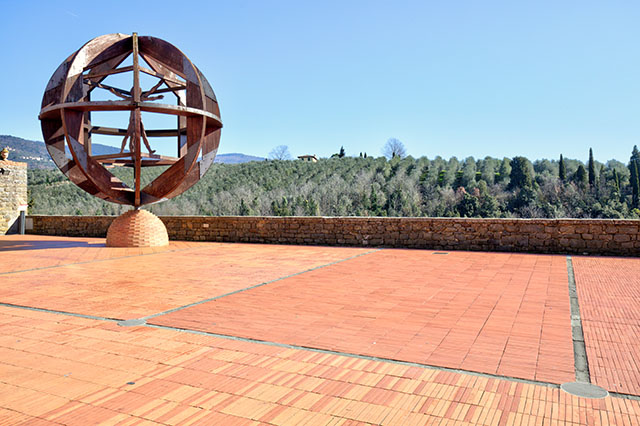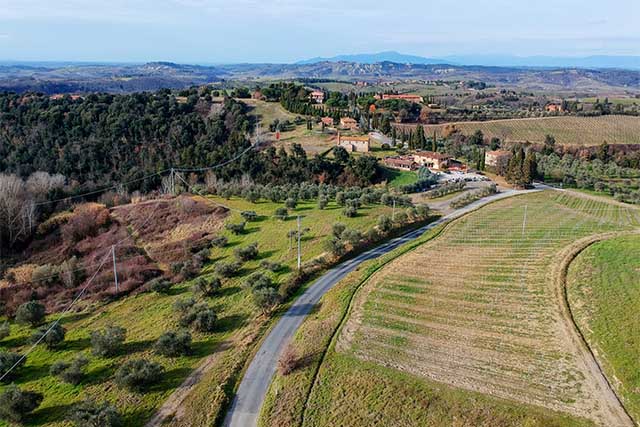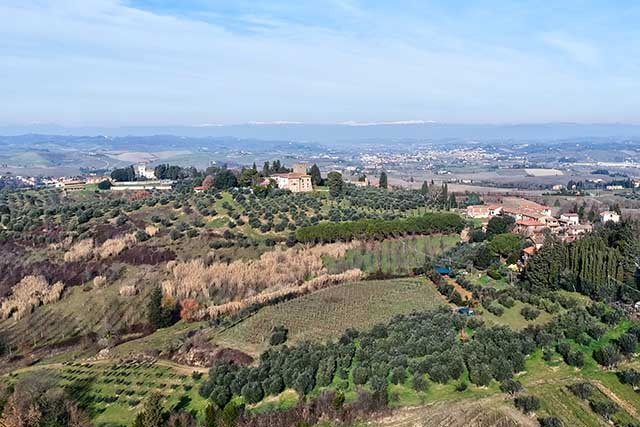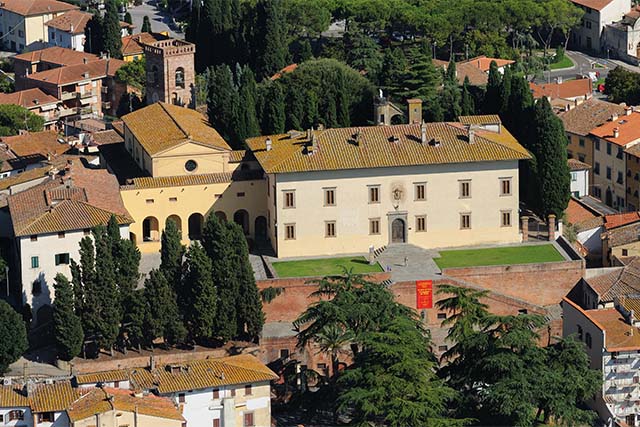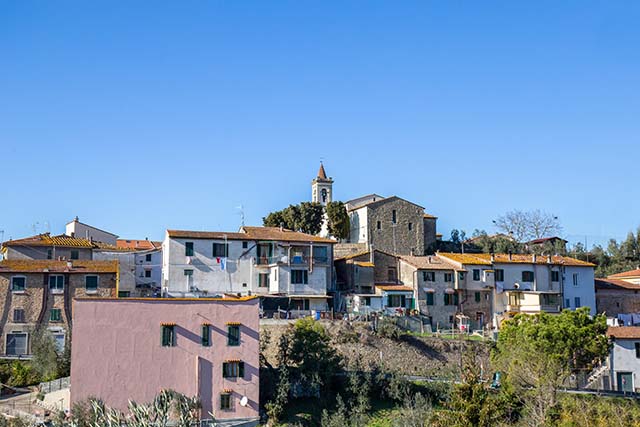Places in the Empolese Valdelsa
Filter/Filtra
Mario Ceroli’s Uomo di Vinci (Man of Vinci), inspired by Leonardo’s famous Vitruvian Man, was donated to the city of Vinci in 1987, and is now located on the panoramic square adjacent to the Museo Leonardiano. This sculpture is a reproduction of a work created twenty years earlier, in 1967, entitled Squilibrio (Imbalance). The artist, in fact, departed deliberately from Leonardo's Vitruvian Man, symbol of balance and harmony. Mario Ceroli's Squilibrio makes ironic reference to contemporary reality, remote from the beauty and harmony that Leonardo's Vitruvian Man stands for as a symbol par excellence.
Today Tonda is a small village that has been transformed into a resort, but during the 16th century, Leonardo drew it as a small castle of the Val d'Egola. The picturesque village, situated a few kilometers from Montaione, was originally a castle belonging to the bishop of Volterra.
Varna today is a small cluster of houses along the ridge road on the left side of the Elsa. Its origins are very ancient: through this medieval village passed various important figures, such as the counts of Fucecchio, who stopped by here when they came to the Valdelsa, in their castles of Catignano and Gambassi. Varna was only a village, but during the Late Middle Ages, it must have taken on the typical features of a fortified country residence. It was in this form that Leonardo depicted Varna on one of his most well-known maps.
The Medici villa of Cerreto Guidi was born, at the behest of Cosimo I, as a holiday resort for the grand-ducal family, as a point of departure for hunting expeditions into the forests of Montalbano and the hills of Greti, up to the borders of the marsh. The museum spaces, where an important collection of hunting weapons is on display, will host an exhibition entitled Il volo tra Pisanello e Leonardo da Vinci (Flight between Pisanello and Leonardo da Vinci). The exhibition itinerary passes through images from treatises on medieval falconry, Pisanello's naturalistic studies, and on up to Leonardo's observations on flight, the central theme of his famous Codex on the Flight of the Birds, on display in facsimile version.
The history of Vitolini, a small town clinging to the slopes of Montalbano di Greti, dates back to the High Middle Ages, when it was a small settlement linked to the city of Pistoia and the church community of San Pietro was dependent on the parish of Greti. The church’s bronze bell bears the signature of its craftsmen, the magistri of Pistoia, as well as the date 1285, the year after the institution of the podestà. Beginning from the mid-14th century, however, Vitolini entered definitively into the orbit of Florence. It was at this stage that the village was fortified with walls and towers, the four towers shown, in fact, in Leonardo's famous bird's eye view drawing in the Windsor Castle collection.




